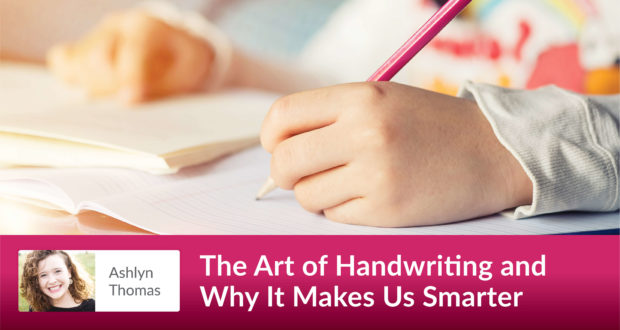Summary
Studies say that good handwriting makes us smarter and improves our memory but, as Ashlyn points out, penmanship can also save us from embarrassing moments.When I took the SAT in 2011, the other students and I were asked to write our names in clear penmanship, cursive.
It should have been easy, except there was a problem. The testing proctor and the other students didn’t know cursive. To their embarrassment, I volunteered to write the alphabet on the whiteboard so that we could continue with our standardized testing.
Thanks to my mother, and Seton, I learned cursive writing in second grade and have continued to use it over the years. But on that day in 2011, it was obvious that I was the only person in that room who had had such an opportunity. I had a question: Why had handwriting lost its significance in society?
There is certainly an art to handwriting, one that has been neglected. It is not only students, but teachers who are quickly forgetting this practice! Researchers from Princeton University and other major universities have conducted studies that demonstrate how students who handwrite notes are significantly better students than peers who rely on technology.
Studies say handwriting makes a student smarter and that choosing a pen over a keyboard encourages higher brain functioning. Handwriting gives an advantage in remembering new concepts long-term, as well as developing small muscles.
Placing higher scores aside, as homeschool graduates and parents, we know how important writing is as a means for communication and the legibility of handwriting is a sure requisite!
Keep Practice Short and Simple
For the young student, it can be a daunting task. However, handwriting does not need to be practiced more than 15 minutes a day, and practice can be as simple as writing a letter to an aunt or grandmother.
There are three components to handwriting: correct formation of the letter, uniformity of letter size, and slant. Practice is necessary. Oversee the student’s handwriting workbook lessons. Large writing tools provide children better control as they form the letters in words. Letters should slant uniformly to the right.
Hands quickly become stiff when hand position is incorrect, so proper position is vital:
The writing tool should be held between the thumb and the first two fingers, an inch above the pencil tip. The first fingers touch the top of the pencil and the thumb is placed below. Remember to tilt the paper toward the left (for the right-handed student) so that the lines of the paper and writing arm form a 30 degree angle. For a uniform slant, pull the letters toward the center of the body.
Fine motor skills develop more slowly than gross motor skills, so if a young student finds handwriting fatiguing, remember that early handwriting should consist of copying letters, words, and sentences. Dictation and note-taking are better tasks given to an older child who has developed handwriting skills.
The purpose of handwriting is to give a person the ability to write quickly and legibly, to complete daily tasks with greater efficiency. Handwriting is a worthy cause for a teacher to share with students, not a battleground! If a young student expresses great frustration, decrease the amount of time when he is practicing his penmanship to two short periods in a day instead of a longer time.
Having been once a young Seton student and now a teacher, I believe that having patience, with reasonable expectations, is the best tool a parent can use when teaching a young student.
View Seton’s Handwriting for Young Catholics series and handwriting paper.

 Seton Magazine Catholic Homeschool Articles, Advice & Resources
Seton Magazine Catholic Homeschool Articles, Advice & Resources

